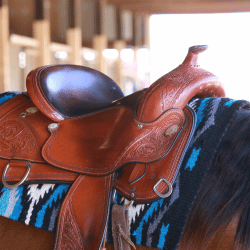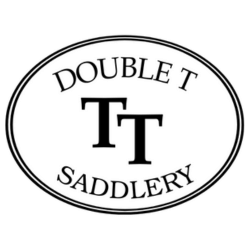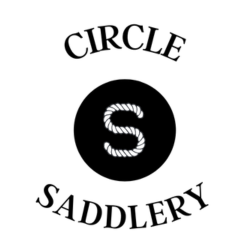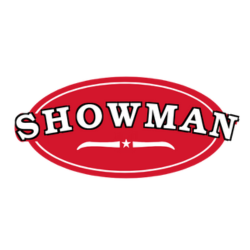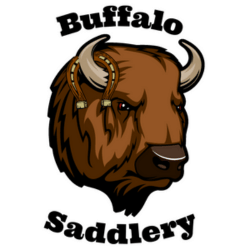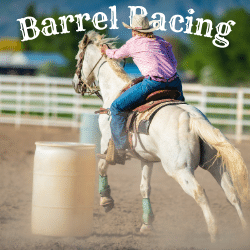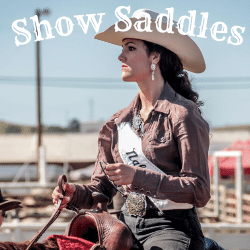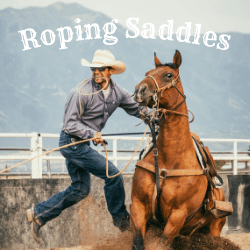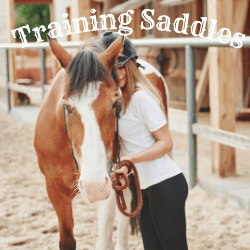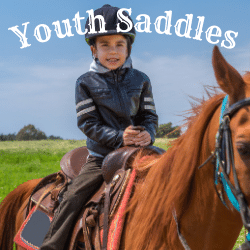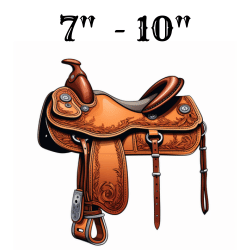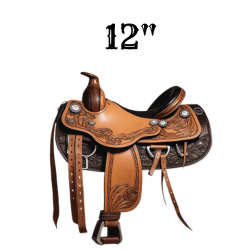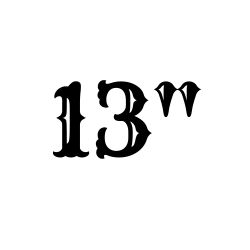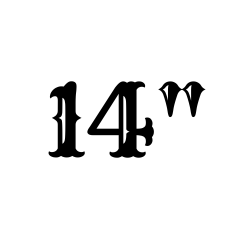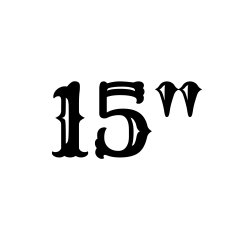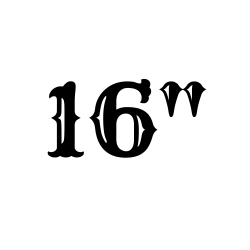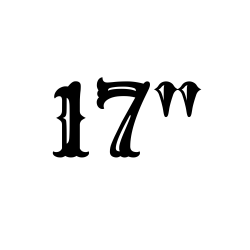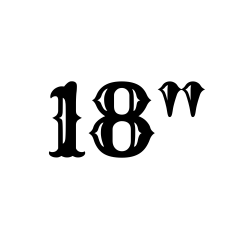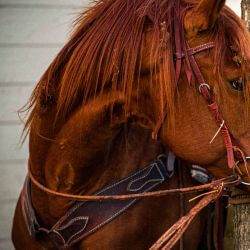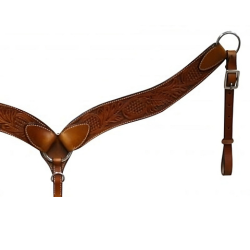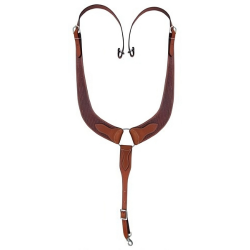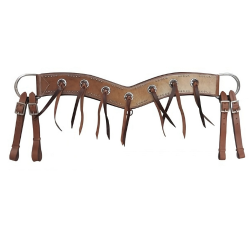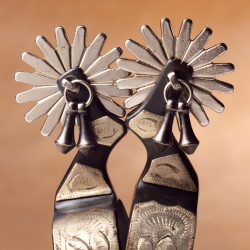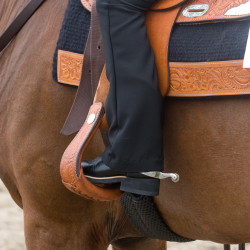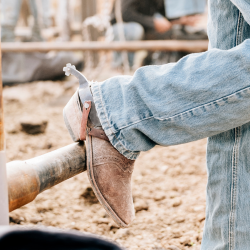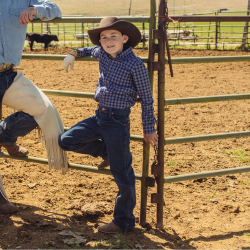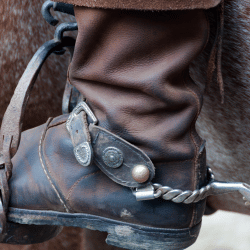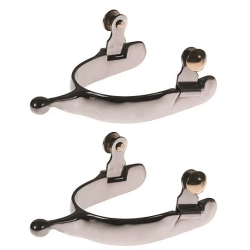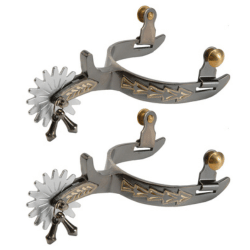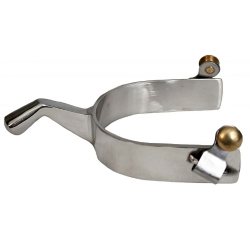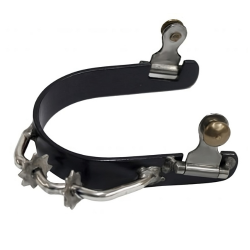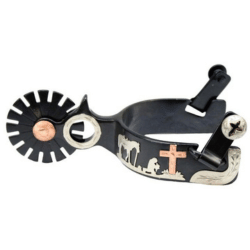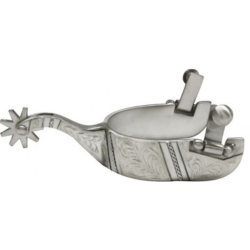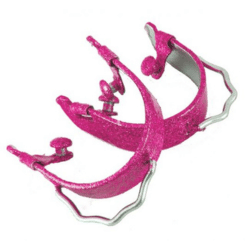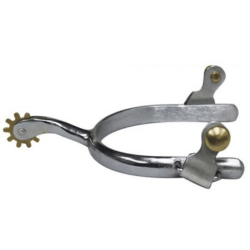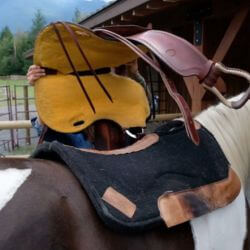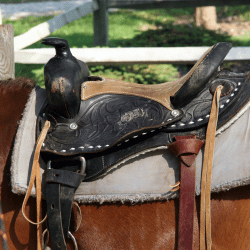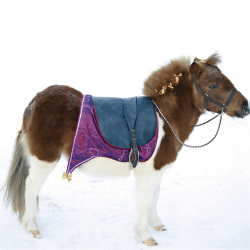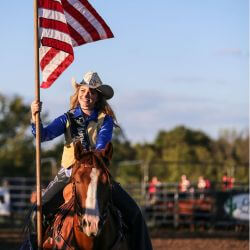Welcome to our blog post on understanding the role and importance of a breast collar for a horse. As horse enthusiasts, we know that proper horse tack is essential for the comfort and safety of both the horse and the rider. One important piece of tack that often goes unnoticed is the breast collar.
In this blog post, we will delve into the definition and purpose of a breast collar, explore the different types available, and highlight the benefits of using one. We will also explain how a breast collar works, its positioning and attachment, and how it affects a horse's movement.
Choosing the right breast collar for your horse is crucial, so we will discuss the factors to consider when making your selection. Additionally, we will provide guidance on fitting a breast collar properly and offer tips on caring for and maintaining it.
Lastly, we will address common questions and misconceptions about breast collars. Can a horse wear a saddle without a breast collar? Do all horses need a breast collar? Are there any risks or disadvantages associated with using one? We will provide answers to these queries and more.
By the end of this blog post, you will have a comprehensive understanding of the role and importance of a breast collar for a horse. Whether you are a seasoned rider or a novice equestrian, this information will help you make informed decisions regarding your horse's tack and enhance your overall riding experience. So, let's get started!
Introduction to Horse Tack: The Essential Role of a Breast Collar
Horses have been used for various purposes throughout history, from transportation and agriculture to sports and recreation. Alongside their majestic beauty and strength, horses require proper equipment and gear to ensure their comfort and safety during various activities. This is where horse tack comes into play.
Horse tack refers to the equipment and accessories used when riding, handling, or working with horses. It includes items such as saddles, bridles, reins, bits, and, of course, breast collars. Each piece of tack serves a specific purpose and plays a vital role in the overall experience for both the horse and the rider.
In this section, we will focus on the importance of horse tack and highlight the essential role of a breast collar. Tack serves as a means of communication and control between the rider and the horse, allowing for a safer and more enjoyable riding experience.
A breast collar, in particular, is a crucial component of horse tack that helps distribute the weight and pressure from the rider or a load evenly across the horse's chest. It provides stability and prevents the saddle from sliding backward, especially during activities that involve pulling or heavy work. By keeping the saddle in place, a breast collar ensures that the horse can move freely and comfortably without any discomfort or potential injuries.
Furthermore, a breast collar can also be used as a valuable tool for training and guiding the horse. It aids in steering and maneuvering, particularly when riding on uneven terrain or navigating challenging obstacles. The added control and stability provided by a breast collar contribute to the overall safety of both the horse and the rider.
As we delve deeper into the topic, we will explore the different types of breast collars available, their specific benefits, and how to choose the right one for your horse. So, let's continue our journey into understanding the role and importance of a breast collar for a horse.
What is a Breast Collar and Why is it Used?
In this section, we will provide an in-depth understanding of what a breast collar is and why it is used in horse tack.
Definition and Purpose of a Breast Collar
A breast collar, also known as a breastplate or breastplate collar, is a piece of horse tack that is designed to sit across the horse's chest. It consists of a strap or straps that run from the saddle's girth or cinch, through the horse's chest, and connect to the saddle or the harness. The breast collar is typically made of leather, nylon, or other durable materials.
The primary purpose of a breast collar is to prevent the saddle from sliding backward during riding or activities that involve pulling or heavy work. By securing the saddle in place, it helps maintain stability and balance for both the horse and the rider. This is particularly important when riding on steep or uneven terrain, performing tasks such as roping or pulling a cart, or participating in sports like barrel racing or cross-country jumping.
The Different Types of Breast Collars
There are several types of breast collars available, each designed to cater to different riding disciplines and purposes. Here are some common types:
-
Traditional/English Breast Collar: This type of breast collar consists of a single strap that attaches to the saddle's D-rings or the billet straps on each side. It is commonly used in English riding disciplines such as dressage, show jumping, and eventing.
-
Western Breast Collar: Western breast collars are typically wider and more elaborate in design compared to their English counterparts. They often feature multiple straps, decorative tooling, and sometimes include a wither strap for added stability. Western breast collars are commonly used in Western riding disciplines such as reining, cutting, and trail riding.
-
Pulling Breast Collar: Pulling breast collars are specifically designed for activities that involve pulling or working with heavy loads, such as draft horses or horses used in logging or farming. They have a wider and more substantial structure to distribute the weight evenly across the horse's chest.
The Benefits of Using a Breast Collar
Using a breast collar offers several benefits for both the horse and the rider:
-
Stability and Security: A breast collar helps keep the saddle in place, preventing it from sliding backward or shifting during riding or pulling activities. This provides stability and security for the rider, ensuring a safer and more comfortable experience.
-
Weight Distribution: A well-fitted breast collar helps distribute the weight and pressure from the rider or a load evenly across the horse's chest. This prevents excessive strain on the horse's back and reduces the risk of soreness or discomfort.
-
Improved Maneuverability: By preventing the saddle from sliding backward, a breast collar allows the horse to move with ease and agility. It enhances the horse's ability to navigate turns, uneven terrain, and obstacles, providing better control and maneuverability for the rider.
-
Training Aid: In some cases, a breast collar can be used as a training aid. It can help guide and direct the horse's movement, particularly when teaching them to respond to rein cues or navigate challenging situations.
Understanding the purpose and benefits of a breast collar is essential for any horse owner or rider. In the next section, we will explore how a breast collar works, its positioning and attachment, and how it affects a horse's movement.
How Does a Breast Collar Work?
In this section, we will delve into how a breast collar works, its positioning and attachment, and how it affects a horse's movement.
Positioning and Attachment of the Breast Collar
To effectively perform its function, a breast collar must be positioned and attached correctly on the horse's chest. Here are the key considerations:
-
Fit: The breast collar should fit snugly but not too tightly around the horse's chest. It should be adjusted to allow enough room for the horse to move and breathe comfortably, without rubbing or causing any discomfort.
-
Length: The length of the breast collar straps should be adjusted to ensure proper positioning. The straps should reach the saddle's D-rings or billet straps and attach securely. It is important to avoid excessive slack or tightness in the straps.
-
Clearance: There should be enough clearance between the horse's chest and the breast collar. It should sit above the point of the horse's shoulder, allowing freedom of movement without restricting the shoulder blades.
-
Attachment Points: The breast collar should attach to the saddle or harness at appropriate points. This could be the D-rings on an English saddle or the dees on a Western saddle. The attachment should be secure to prevent any slipping or shifting during riding or pulling activities.
The Role of a Breast Collar in Riding and Pulling
A properly fitted breast collar plays a significant role in both riding and pulling activities. Here's how it affects the horse's performance:
-
Riding: During riding, a breast collar helps maintain the stability and balance of the saddle. It prevents the saddle from sliding backward, especially during sudden stops, steep descents, or when riding on challenging terrain. This ensures that the rider remains centered and secure in the saddle, reducing the risk of accidents or falls.
-
Pulling: In activities that involve pulling or working with heavy loads, such as draft horses or horses used in farming, a breast collar is particularly crucial. It helps distribute the weight of the load evenly across the horse's chest, reducing strain on the back muscles. This promotes better pulling efficiency and minimizes the risk of injury.
How a Breast Collar Affects a Horse's Movement
The proper use of a breast collar can have a positive impact on a horse's movement and overall performance. Here are some ways it affects a horse's movement:
-
Range of Motion: A well-fitted breast collar allows the horse to move its shoulders freely without restriction. This is important for proper extension and flexion of the front legs, enabling the horse to maintain a balanced and fluid stride.
-
Shoulder Flexibility: By preventing the saddle from sliding backward, a breast collar helps maintain proper alignment of the saddle on the horse's back. This allows the horse's shoulder muscles to work efficiently and provides better range of motion, resulting in improved performance and comfort.
-
Enhanced Balance: With the saddle securely in place, a horse can maintain better balance and stability. This is especially beneficial when navigating turns, performing maneuvers, or tackling challenging obstacles.
Understanding how a breast collar works and its impact on a horse's movement is essential for riders and horse owners. In the next section, we will discuss the factors to consider when choosing a breast collar for your horse, ensuring the perfect fit and optimal performance.
Choosing the Right Breast Collar for Your Horse
In this section, we will guide you through the process of choosing the right breast collar for your horse. Selecting the appropriate breast collar is crucial to ensure a comfortable fit and optimal performance. Here are the factors to consider:
Factors to Consider When Choosing a Breast Collar
-
Riding Discipline: Consider the specific riding discipline you will be participating in. Different disciplines may have specific requirements or preferences regarding breast collar styles. For example, Western riding may call for a wider and more decorative breast collar, while English riding may require a simpler and more streamlined design.
-
Horse's Conformation: Take into account your horse's conformation and body shape. Some horses have a more pronounced wither, while others have a broader chest. Choose a breast collar that complements your horse's conformation and provides a comfortable fit without restricting movement.
-
Material: Breast collars are typically made of leather or nylon. Leather breast collars are more traditional and often favored for their durability and aesthetic appeal. Nylon breast collars, on the other hand, are lightweight, easy to clean, and more affordable. Consider your preferences and the specific needs of your horse when selecting the material.
-
Adjustability: Look for a breast collar that offers adjustability in terms of length and fit. This allows you to customize the fit to your horse's specific measurements and ensures a secure and comfortable fit.
-
Style and Design: While functionality is key, you may also want to consider the style and design of the breast collar. Choose a design that aligns with your personal preferences and complements your overall tack ensemble. Remember, however, that the fit and functionality should always take precedence over aesthetics.
Fitting a Breast Collar Properly
Proper fitting is crucial to ensure the effectiveness and comfort of a breast collar. Here are some guidelines for fitting a breast collar:
-
Size: Measure your horse's chest circumference to determine the appropriate size of the breast collar. Most manufacturers provide size charts to help you choose the right size. Follow the manufacturer's guidelines and remember to account for adjustability.
-
Placement: Position the breast collar above the point of the horse's shoulder blades. It should sit snugly but not too tightly against the chest, with enough clearance for the horse's movement and breathing.
-
Adjustments: Adjust the straps of the breast collar to achieve a secure fit. Ensure that there is enough room for the horse to move and stretch its front legs freely without any discomfort or restriction.
Caring for and Maintaining a Breast Collar
To ensure the longevity and performance of your breast collar, proper care and maintenance are essential. Here are some tips:
-
Cleaning: Regularly clean your breast collar to remove dirt, sweat, and debris. Follow the manufacturer's instructions for cleaning based on the material of your breast collar. Leather breast collars may require conditioning to keep the leather supple and prevent cracking.
-
Inspection: Regularly inspect the breast collar for any signs of wear and tear. Check for loose stitching, fraying, or any damage that may compromise its functionality. Repair or replace the breast collar as needed to maintain its effectiveness.
-
Storage: Store your breast collar in a clean and dry area, away from direct sunlight or extreme temperatures. This helps prevent damage and prolongs the lifespan of the breast collar.
By considering these factors and properly fitting and maintaining your breast collar, you can ensure the comfort and performance of your horse. In the next section, we will address common questions and misconceptions about breast collars, providing clarity and debunking any myths surrounding their use.
Common Questions and Misconceptions About Breast Collars
In this section, we will address some common questions and misconceptions about breast collars. By debunking myths and providing accurate information, we aim to provide clarity and a better understanding of the role and importance of breast collars. Let's explore:
Can a Horse Wear a Saddle Without a Breast Collar?
One common misconception is that a horse can wear a saddle without a breast collar. While it is true that some horses may not require a breast collar, it largely depends on the individual horse and the specific riding or working activities. Factors such as the horse's conformation, the type of saddle used, and the nature of the activities being performed all come into play.
In general, a breast collar is recommended for horses that are engaged in activities that involve pulling, heavy work, or riding on steep or challenging terrain. It provides added stability and helps prevent the saddle from sliding backward, ensuring the safety and comfort of both the horse and the rider.
Do All Horses Need a Breast Collar?
The need for a breast collar varies from horse to horse. Some horses may have conformational characteristics or movement patterns that make a breast collar unnecessary. Horses with well-developed shoulder muscles and a well-fitted saddle may not require a breast collar for most riding disciplines.
However, certain disciplines or activities, such as roping, barrel racing, or trail riding, may benefit from the use of a breast collar regardless of the horse's conformation. Additionally, horses that are engaged in pulling or heavy work, such as draft horses or horses used in farming, will often require a breast collar to distribute the weight evenly and ensure proper balance.
Ultimately, the decision to use a breast collar should be based on the individual horse's needs, the type of riding or working activities, and the recommendations of experienced horse professionals.
Are There Risks or Disadvantages to Using a Breast Collar?
When used correctly and fitted properly, a breast collar poses minimal risks or disadvantages. However, it is important to ensure that the breast collar is not too tight or too loose, as either extreme can cause discomfort or restrict the horse's movement.
Improperly fitted breast collars can cause rubbing, chafing, or even pressure sores on the horse's chest. It is crucial to regularly inspect the breast collar for signs of wear, damage, or poor fit, and make adjustments or seek professional guidance if necessary.
Additionally, it is essential to choose a breast collar that is appropriate for the horse's conformation and the intended use. Using an ill-fitting or incorrect type of breast collar can lead to discomfort, restricted movement, or even accidents.
In conclusion, while there are risks associated with improper use or fitting, a well-fitted breast collar used in appropriate situations can provide numerous benefits and enhance the comfort and safety of both the horse and the rider.
By addressing these common questions and misconceptions, we hope to provide a clearer understanding of the role and importance of breast collars. In the next section, we will provide a summary of the key points discussed and conclude our comprehensive exploration of breast collars for horses.

